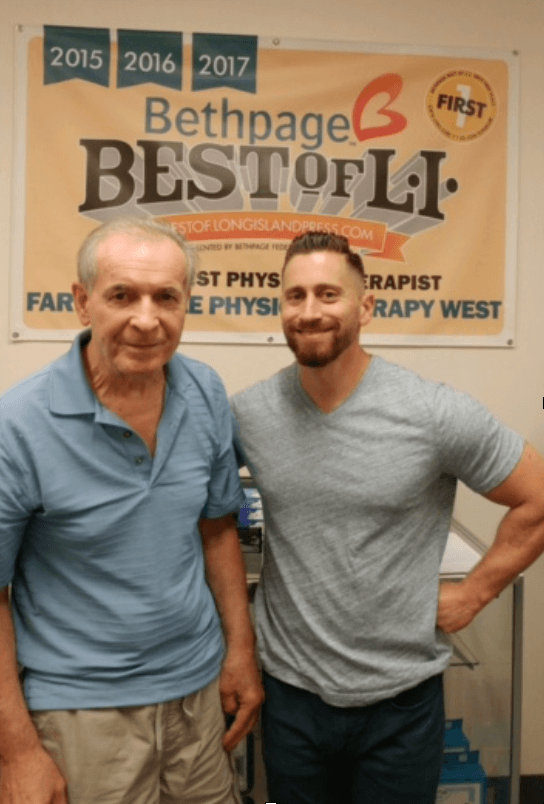A physical therapist uses many techniques to help eliminate back and sciatica pain. Treatment may include mobilizations, McKenzie-based therapy, manual therapy, spinal stabilization, core strengthening exercises, traction or nerve glides.
Physical therapy is an important component of treating back pain. When you meet with a physical therapist, there will be a full assessment. Tests will be done and an individualized treatment plan will be developed based on your goals. We work with you and your physician to create a program that improves mobility in other spinal areas that may be inflexible, strengthen key muscles to stabilize the spine, and educate you on the proper techniques to maintain spinal stability.
If you’re suffering from back pain, sciatica pain or low back pain, don’t wait any longer for relief. Be sure to give our office a call to set up a one-on-one consultation and full evaluation. Our physical therapists are certified, experienced, and committed to helping you feel better. They’ve helped many others recover from back issues and can help you too.
“Before coming to physical therapy, I had a lot of problems with my back. Working with Scott, I now walk better, feel better, and have less pain and stiffness. The two girls at the front desk are kind, helpful, and sweet. And Scott is an amazing therapist. He created a custom therapy plan for me and I feel significantly better. I am very thankful I found Farmingdale Physical Therapy West.” -Imre M.
What are the Symptoms of Sciatica?
Back pain and sciatica pain are closely related medical conditions. Many times, sciatica pain is the result of a medical back problem. The sciatic nerve is the longest nerve in the human body. It consists of nerve roots in the lower back and runs through the buttock, and down the back of each leg. Portions of this nerve branch out to the thigh, calf, foot and toes. Sciatica nerve pain is often characterized by the following symptoms.
- Low back pain that radiates down the leg
- Leg pain with burning and tingling
- Numbness in the leg or foot
- Continual pain on one side of the buttock
- Sharp pain
- Trouble sitting and getting up
It’s important to note that sciatica is not a medical diagnosis in itself. It is actually a symptom of an underlying problem. Therefore, the root cause must be identified for effective treatment. Common lower back problems that can cause sciatica include degenerative disc disease, lumbar spinal stenosis, lumbar herniated disc and spondylolisthesis.
Common Causes of Back Pain
There are many conditions that may be contributing to your back pain. Our quality physical therapists will diagnose the cause of your back pain, and develop the right treatment plan. The following 4 conditions are common causes of back pain.
Degenerative Disc Disease
Disc degeneration is a natural process that often occurs as we age. For some people it can occur young. One or more degenerated discs in the spine or lower back can irritate a nerve root. This disease is diagnosed when a weakened disc is exposed. Additionally, bone spurs may develop with disc degeneration and cause sciatica.
Lumbar Spinal Stenosis
Lumbar spinal stenosis is caused by a gradual narrowing of the spinal canal. It’s also common in the aging process and typically affects those over 50. Furthermore, it can be a result of a bulging disc, enlarged facet joints, arthritis or an overgrowth of soft tissue. Whatever the cause, it can result in back pain and sciatica pain.
Lumbar Herniated Disc
This condition occurs when the soft gel material of the disc leaks out and passes through the outer core. It irritates the sciatic nerve. Sciatica is the most common symptom of a herniated disc. Additionally, it is often referred to as a bulging disc, slipped disc, ruptured disc or protruding disc.
Spondylolisthesis
Spondylolisthesis occurs when a small stress fracture (spondylolysis) causes one vertebrae to slip forward on another, leading to a disc space collapse. This condition most commonly occurs at the L5 level and most frequently occurs in sports with repetitive extension and rotation, such as gymnastics, dance, and soccer. Symptoms can be mild such as general fatigue to the low back, achy pain, or severe symptoms if there is compression on the nerves exiting the spine or spinal cord. There are varying degrees of severity. Most fall into a mild to moderate category that can be stabilized with improved posture and muscle strengthening. In severe cases, surgery may be necessary to fuse the area and bring stability back.
Physical Therapy Treatment for Back Pain, Sciatica Pain and Low Back Pain
Regardless of why you are having your back pain, Farmingdale Physical Therapy can help! Our proven PT techniques can offer you relief, as well as treat the cause of the pain.


